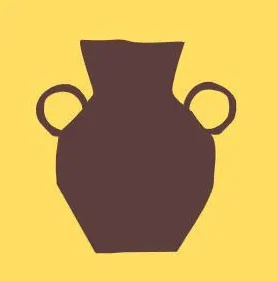Over the past month, I had the incredible opportunity to participate in an archaeology field school for the very first time. This enriching program was led by the University of Wyoming excavation at a site in La Prele, Wyoming, one of Wyoming’s oldest archaeological sites, dating back nearly 13,000 years. This site provided a captivating glimpse into the lives of early Paleo-Indians, who established a camp in order to butcher a young Columbian mammoth they had hunted and killed. The site’s wealth of artifacts indicated that the site was not only a butchering location but also a significant trading and resting post frequented by various groups, such as the Clovis and Folsom people.
While excavating this site, I learned numerous processes and methods of excavation. We was taught how to properly excavate a unit using trowel and shovel scraping as to not damage artifacts while digging. We also learned how to fill out the appropriate paperwork to record our progress and catalogue artifacts. A total station, an electronic device which shot laser signals was utilized to determine exact positions of artifacts and map the site accurately. Another important technique we learned was water screening, where buckets of excavated dirt were sifted through mesh screens to find any small artifacts that may of been missed during the initial digging. Using these excavation techniques, we found many lithic artifacts during excavation, including flakes, flake tools, and an ultrathin biface. We also found artifacts of different materials, including an antler tool, bone needles, charcoal, and ochre. These findings indicated that our excavation site had once been a dwelling for a Paleo-Indian family.
Along with excavation, our field school also had the chance to do various activities relating to the lives of Paleo-Indians that had once lived in the Wyoming area. We learned flint knapping, a technique of shaping stones which prehistoric peoples used to create lithic tools like points, hammerstones, cores, scrapers, and more. We also learned how to start a fire using the bow drill method which was historically crucial for survival, providing warmth and enabling cooking. You can watch a video on the process if you are interested in learning more here: https://www.youtube.com/watch?v=_tpBCflcekU. In addition, we learned atlatl throwing, an ancient method of spear throwing used to hunt large game.

Why is field school important?
I met many amazing people and passionate professionals who supported me wholeheartedly, despite my lack of experienced and age gap compared to the other field school participants. These individuals were always willing to teach me and engage in discussions with me whenever I had questions. The connections I made through field school were invaluable, I learned skills that would’ve been impossible to gain by simply reading a textbook or taking an anthropology class.
Through the field school, I gained an understanding of optimal excavation techniques and how to use common archaeological tools. I also gained profound insight into the lives of prehistoric peoples and the complexities of early Paleo-Indian societies. Beyond the academic and technical skills, the field school experience also fostered personal growth and independence. With no cell signal and camping alone for 10 days, I had to rely on myself and adapt to a remote and challenging environment. Staying in a remote area with strangers much older than me for over a week pushed me out of my comfort zone, helping me develop confidence and self-reliance.
Overall, this field school was a transformative experience that not only deepened my understanding and passion for archaeology but also helped me grow as an individual. The support of my fellow participants and archaeologists I worked alongside, combined with the practical and personal lessons learned, made this an unforgettable and invaluable part of my journey.
More information about the La Prele Mammoth Site and the Wyoming Archaeological Field School can be found below:
https://www.uwyo.edu/anthropology/fieldschool/wyoming-field-school.html

